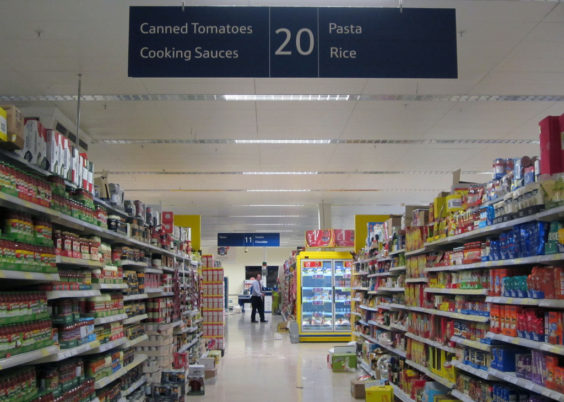
It’s a common complaint – “there aren’t enough coupons for the things I want to buy.” It’s hard to save money when the only coupons you can find, are for things you don’t want.
Well, a new survey, together with some recent statistics, paints a picture of what types of products couponers typically purchase – and what types of products are the most popular. And it turns out they’re not one and the same.
The trade publication Progressive Grocer is out with its 82nd Annual Report of the Grocery Industry. Among the many questions it asked retailers across the country, is what types of products sell best in their stores.
And the most successful departments in generating sales and driving traffic are very different from the most successful departments in terms of coupon redemption.
More than half of respondents said meat generates the most sales in their stores, followed closely by produce and private label products. Meat also topped the list of departments that are best at driving foot traffic into stores, followed by produce, deli/prepared foods and dairy.
In other words – all of the product categories for which there are rarely coupons.
So it’s perhaps not surprising that the list of departments in which coupons are most likely to be used, looks much different. Retailers responding to the survey say the most successful departments in coupon redemption are the center store, where most of the dry packaged goods are located, followed by frozen food, general merchandise and health/beauty/wellness. Meat, produce, bakery and private label were near the bottom of the list.
So does that mean retailers and manufacturers are lousy at offering coupons for what we actually want to buy – or that they’re great about using coupons to entice us to buy things we otherwise wouldn’t?
Maybe it’s both. Take frozen foods, for example. It’s the one category that appears relatively high in each segment of the survey. 40% of respondents said it’s one of their best sellers, 24% said the department was successful at driving traffic, and 21% said it sees some of the most coupon use.
Despite fears that frozen foods are in decline as a category, it appears that shoppers still like to buy them – and like to use coupons while doing so. That makes it a win-win, as shoppers save money on the very products on which retailers report they’re making money.
Can’t all categories be like that? Could stores and brands make even more money, by offering more coupons in categories that already drive sales without them? Or does the fact we’re buying anyway, mean they don’t need to give us any additional incentives to buy?
Take a look at refrigerated foods. According to Inmar’s recent Promotion Industry Analysis, it’s a popular category among couponers. The average face value of coupons redeemed in the refrigerated category was up nearly 10% last year, the largest increase in any category, which means shoppers are responding to higher-value offers. Yet the number of refrigerated food coupons actually offered last year showed the steepest decline of any category, down 22.8% from the previous year.
So clearly, shoppers want coupons for refrigerated foods – but they’re not finding very many of them. More coupons then, may well translate into more sales.
Retailers and brands are always tweaking their strategies – in-store promotions could help a category with slow sales rebound, while a category with few coupons this year might have plenty the next. So if you don’t see coupons for the products you want, just wait. A new way to entice you to buy, just might be right around the corner.











Also declines in redemption of refrigerated foods could be the trend of $/2 items when if the shopper buys two that one my spoil before the shopper uses it, so that they don’t use the coupon and buys one item to avoid waste.
Hmm….those categories that drive foot traffic are are meats, produce and dairy. Did the study consider that these are highly perishable items and that some shoppers are making more than one trip a week to get fresh food in between larger shopping trips?